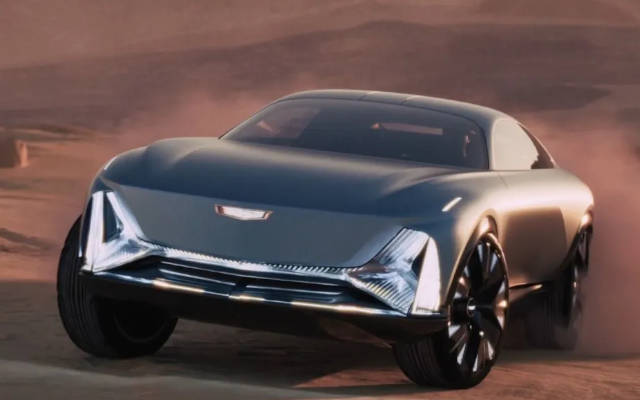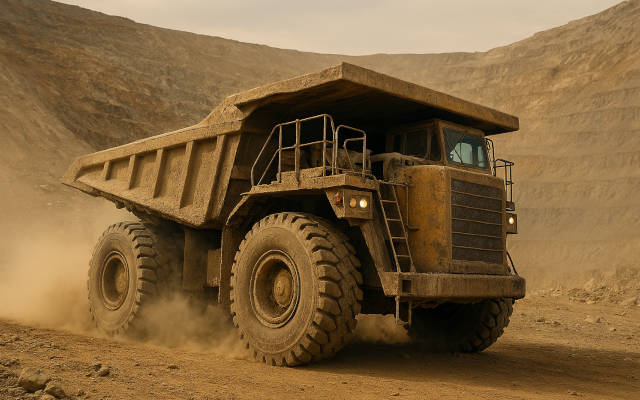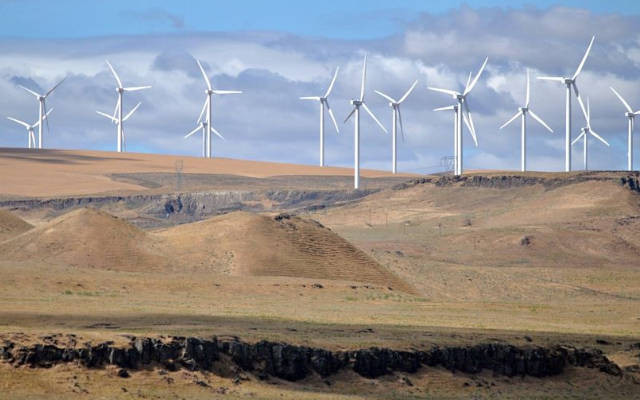 EDITOR'S PICK
EDITOR'S PICK
China EV Crossroads: Investor Optimism vs. Industry Fragility
23 Aug 2025 | Synopsis
 Chinese EV makers like Nio and XPeng face a paradox. Stocks are rising as investors bet on innovation, yet fundamentals look fragile. Reports show unsold inventory piling up, delayed supplier payments exceeding 200 days, and dependence on subsidies and debt. Optimism reflects faith in long-term growth, but sustainability hinges on converting production into real demand.
Chinese EV makers like Nio and XPeng face a paradox. Stocks are rising as investors bet on innovation, yet fundamentals look fragile. Reports show unsold inventory piling up, delayed supplier payments exceeding 200 days, and dependence on subsidies and debt. Optimism reflects faith in long-term growth, but sustainability hinges on converting production into real demand.Cadillac's Elevated Velocity Concept Signals GM's Electric Ambitions
22 Aug 2025 | Synopsis
 Cadillac's Elevated Velocity concept EV showcases GM's bold push into electric luxury and performance. With off-road capability, immersive wellness tech, and autonomous features, it signals GM’s intent to electrify beyond sedans - targeting aspirational, versatile segments. As Cadillac eyes a 2030 all-electric goal, this concept underscores GM's commitment to redefining EV identity through innovation and design.
Cadillac's Elevated Velocity concept EV showcases GM's bold push into electric luxury and performance. With off-road capability, immersive wellness tech, and autonomous features, it signals GM’s intent to electrify beyond sedans - targeting aspirational, versatile segments. As Cadillac eyes a 2030 all-electric goal, this concept underscores GM's commitment to redefining EV identity through innovation and design.Carbon Dioxide Isn’t What You Think It Is
22 Aug 2025 | Synopsis
 Science journalist Peter Brannen reframes carbon dioxide not as a villain but as an essential molecule that has shaped life and Earth's history through the global carbon cycle. His book highlights how CO₂ has modulated climate, driven evolution, and enabled civilization. Yet current fossil-fuel–driven CO₂ emissions are unprecedented in speed, potentially threatening stability built over deep time.
Science journalist Peter Brannen reframes carbon dioxide not as a villain but as an essential molecule that has shaped life and Earth's history through the global carbon cycle. His book highlights how CO₂ has modulated climate, driven evolution, and enabled civilization. Yet current fossil-fuel–driven CO₂ emissions are unprecedented in speed, potentially threatening stability built over deep time.We Could Get Most Metals For Clean Energy Without Opening New Mines
21 Aug 2025 | Synopsis
 Recycling existing materials - such as mine waste, used electronics, and batteries - can supply most of the metals needed for clean-energy technologies, potentially avoiding new mining operations and reducing environmental and social impacts. Leveraging innovations in circular economy strategies and policy shifts toward reuse offers a sustainable alternative to traditional mining.
Recycling existing materials - such as mine waste, used electronics, and batteries - can supply most of the metals needed for clean-energy technologies, potentially avoiding new mining operations and reducing environmental and social impacts. Leveraging innovations in circular economy strategies and policy shifts toward reuse offers a sustainable alternative to traditional mining.Africa: The Green Transition's Surprising New Home
21 Aug 2025 | Synopsis
 Africa emerges as unexpected renewable energy leader, "leapfrogging" fossil fuels with 60% of world's best solar resources. Kenya targets 100% renewables by 2030, Ethiopia builds largest hydro project. Chinese clean tech exports up 153%. By 2030, renewables will account for 80%+ of new capacity. Economic necessity drives energy independence through domestic clean sources.
Africa emerges as unexpected renewable energy leader, "leapfrogging" fossil fuels with 60% of world's best solar resources. Kenya targets 100% renewables by 2030, Ethiopia builds largest hydro project. Chinese clean tech exports up 153%. By 2030, renewables will account for 80%+ of new capacity. Economic necessity drives energy independence through domestic clean sources.
 Si Exclusive
Si Exclusive
Hydrogen's Flight Path: Fuel Cells, Turbines, and the Economics of Clean Aviation
10 Oct 2025 |  Aviation is shifting from Jet A to four fuel systems: electricity, hydrogen (fuel cell and combustion), SAF, and petroleum. Fuel cells suit short-haul aircraft; hydrogen combustion may power long-range jets. SAF bridges legacy fleets. Hydrogen costs - $5-$7/kg today, possibly $2/kg by 2040 - impact ticket prices and infrastructure decisions. Airport authorities, airlines, and governments will share deployment costs. Each fuel has distinct environmental pros and cons shaping aviation's net-zero future.
Aviation is shifting from Jet A to four fuel systems: electricity, hydrogen (fuel cell and combustion), SAF, and petroleum. Fuel cells suit short-haul aircraft; hydrogen combustion may power long-range jets. SAF bridges legacy fleets. Hydrogen costs - $5-$7/kg today, possibly $2/kg by 2040 - impact ticket prices and infrastructure decisions. Airport authorities, airlines, and governments will share deployment costs. Each fuel has distinct environmental pros and cons shaping aviation's net-zero future.
Ferrari Elettrica: Electrified, Not Tamed
09 Oct 2025 |  Ferrari's Elettrica EV delivers over 1,000 hp via quad motors, hitting 0-100 km/h in 2.5s with a 330+ mile range. Its 122 kWh battery sits low for balance, paired with active suspension and rear steering. Designed by LoveFrom, the four-door GT aims to preserve Ferrari's emotional DNA. Priced around $580K, it launches in 2026 in Europe and the U.S., with hybrids and ICE models still dominating until 2030
Ferrari's Elettrica EV delivers over 1,000 hp via quad motors, hitting 0-100 km/h in 2.5s with a 330+ mile range. Its 122 kWh battery sits low for balance, paired with active suspension and rear steering. Designed by LoveFrom, the four-door GT aims to preserve Ferrari's emotional DNA. Priced around $580K, it launches in 2026 in Europe and the U.S., with hybrids and ICE models still dominating until 2030
Are Self-Driving Cars Safer Than Humans? The Data May Surprise You
09 Oct 2025 |  Studies show autonomous vehicles (AVs) are generally safer than human drivers, avoiding most rear-end and broadside crashes and performing better in poor weather. However, AVs struggle with complex maneuvers like unprotected turns and low-light conditions. If AVs are just 10% safer, they could prevent 600,000 U.S. deaths over 35 years. As EVs become autonomy platforms, safety depends on how well they interpret real-world scenarios
Studies show autonomous vehicles (AVs) are generally safer than human drivers, avoiding most rear-end and broadside crashes and performing better in poor weather. However, AVs struggle with complex maneuvers like unprotected turns and low-light conditions. If AVs are just 10% safer, they could prevent 600,000 U.S. deaths over 35 years. As EVs become autonomy platforms, safety depends on how well they interpret real-world scenarios
 11 Oct 2025 13:55:51 UTC |
RECENT PODCASTS
BYD Soars - Cheaper Tesla Models - The Bolt is Back - Rivian
SEARCH RSSTREAM
 29 New Postings In Past 24 Hours
29 New Postings In Past 24 Hours
Category:mobility
Region:Europe
Date:10 Oct 2025
Category:energy
Region:Global
Date:10 Oct 2025
Category:mobility
Region:SoAmerica
Date:10 Oct 2025
Category:energy
Region:NoAmerica
Date:10 Oct 2025
Category:mobility
Region:NoAmerica
Date:10 Oct 2025
Category:finance
Region:AsiaPacific
Date:10 Oct 2025
Category:policy
Region:NoAmerica
Date:10 Oct 2025
Category:finance
Region:NoAmerica
Date:10 Oct 2025
Category:mobility
Region:AsiaPacific
Date:10 Oct 2025
Category:policy
Region:NoAmerica
Date:10 Oct 2025
Category:mobility
Region:NoAmerica
Date:10 Oct 2025
Category:autonomy
Region:NoAmerica
Date:10 Oct 2025
Category:mobility
Region:AsiaPacific
Date:10 Oct 2025
Category:finance
Region:NoAmerica
Date:10 Oct 2025
Category:policy
Region:NoAmerica
Date:10 Oct 2025